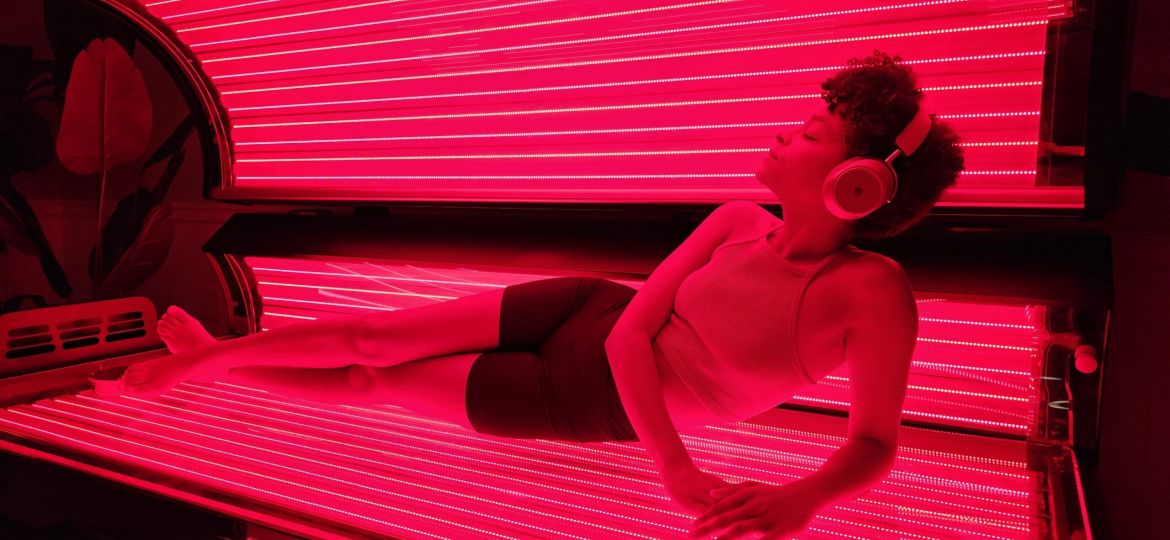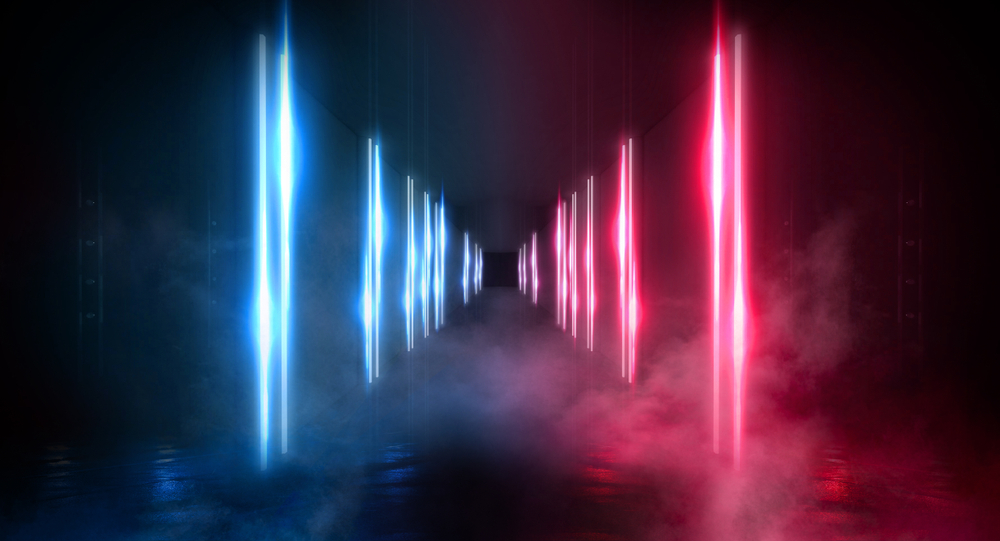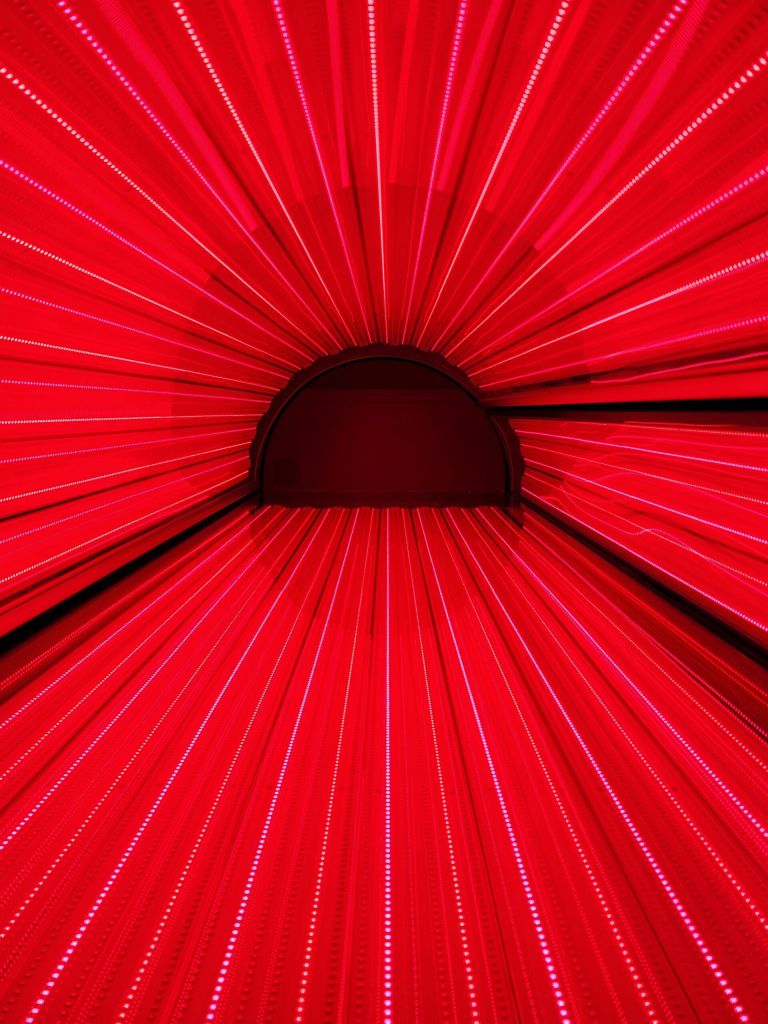
Welcome to the world of Red and Blue Light Therapy, where science, technology, and well-being converge to reshape our understanding of skincare and holistic health. In this comprehensive exploration, we’ll delve into the biological, scientific, and technical marvels behind these therapies, unlocking their profound potential to enhance your skin’s health and your overall sense of wellness.
Together, Red and Blue Light Therapy form a powerful alliance, capitalizing on photobiomodulation, antibacterial prowess, and anti-inflammatory capabilities. This dynamic partnership offers a holistic approach to skincare and wellness, promising a multitude of benefits, including skin rejuvenation, inflammation reduction, pain relief, and the overall enhancement of your skin’s vitality. Our journey will unravel the intricate details and potential of these therapies, illuminating the path to radiant well-being through the transformative power of light.
Red Light Therapy, scientifically known as Low-Level Light Therapy (LLLT) or Photobiomodulation Therapy, offers a unique glimpse into the intricate biological processes that occur beneath the surface of your skin. It revolves around the interaction between specific wavelengths of red and near-infrared light and your body’s cellular powerhouses, mitochondria. This interaction triggers a cascade of molecular rejuvenation, enhancing cellular energy production and revitalizing your skin from within.
Applications and Benefits of Red and Blue Light Therapy
SKIN HEALTH AND REJUVENATION
Red and Blue Light Therapies, when combined, offer a holistic approach to enhancing skin health and rejuvenation. This synergistic therapy leverages the distinctive mechanisms of action of both red and blue light to address various skin concerns.
Collagen Production:
Red Light Therapy, through the process of photobiomodulation, stimulates collagen production. Collagen is a crucial protein responsible for skin elasticity and suppleness. By enhancing collagen synthesis, red light therapy helps reduce the appearance of wrinkles, fine lines, and scars.
Reduced Inflammation:
Blue Light Therapy’s selective targeting of bacteria and its anti-inflammatory properties make it effective in calming skin inflammation. This can be particularly beneficial for those dealing with acne-related redness and swelling.
Acne Management:
The combination of red and blue light therapy offers a comprehensive approach to acne management. Blue light’s antibacterial action combats acne-causing bacteria (Propionibacterium acnes), while red light’s anti-inflammatory effects help soothe irritated skin.
PAIN MANAGEMENT AND RECOVERY
Beyond its benefits for skin health, Red and Blue Light Therapy can also aid in pain management and recovery from muscular and joint discomfort.
Reduced Inflammation:
Both therapies contribute to reducing inflammation in the treated area. Red light therapy’s anti-inflammatory effects, combined with blue light’s ability to soothe irritated skin, can provide relief from inflammatory conditions.
Tissue Repair and Regeneration:
Red Light Therapy’s mechanism of action, involving the activation of mitochondrial function and enhanced ATP production, promotes tissue repair and regeneration. This can be particularly useful for individuals recovering from injuries or undergoing physical therapy.
HAIR GROWTH STIMULATION
For individuals seeking to stimulate hair growth or combat hair loss, the combination of Red and Blue Light Therapy can be a valuable addition to their hair care regimen.
Hair Follicle Stimulation:
Red Light Therapy’s ability to increase cellular energy and improve blood flow to the scalp can stimulate dormant hair follicles, potentially leading to hair regrowth.
Bacterial Control:
Blue Light Therapy’s antibacterial action may help manage scalp conditions that contribute to hair loss, such as dandruff or folliculitis.
SKIN TEXTURE AND TONE IMPROVEMENT
Red and Blue Light Therapy can contribute to achieving smoother skin texture and a more even skin tone.
Collagen and Elasticity:
Red light’s impact on collagen production can improve skin elasticity and firmness, enhancing overall texture.
Reduced Redness:
Blue light’s anti-inflammatory effects can reduce skin redness, making it especially beneficial for those with conditions like rosacea or erythema.
Scar Healing:
The combination therapy may aid in the healing and reduction of scars, whether from acne or other skin injuries, by promoting tissue regeneration.
Incorporating Red and Blue Light Therapy into your skincare routine offers a multifaceted approach to addressing various skin-related concerns. By harnessing their distinct biological mechanisms of action, you can achieve skin rejuvenation, pain relief, hair growth stimulation, and overall skin health improvements. Understanding the synergy of these therapies empowers you to make informed decisions about optimizing your well-being and skincare regimen.
Complementing this therapeutic marvel is Blue Light Therapy, rooted in the realm of photodynamic therapy (PDT). This therapy dives deep into the world of porphyrins, natural compounds residing in your skin and certain bacteria. When exposed to the blue light, porphyrins awaken and give birth to reactive oxygen species (ROS), notably singlet oxygen. These ROS, armed with potent antibacterial properties, embark on a mission to combat acne-causing bacteria, most notably Propionibacterium acnes.

Red and Blue Light Therapy: Biological and Scientific Insights
RED LIGHT THERAPY
Red Light Therapy, often referred to as Low-Level Light Therapy (LLLT) or Photobiomodulation Therapy, represents an advanced therapeutic approach that harnesses specific wavelengths of red light to engage with our cells at a molecular level. To grasp its profound impact on well-being, it’s crucial to comprehend the biological mechanisms that underlie this therapy.
Red Light Therapy, or RLT, involves the non-invasive application of red and near-infrared light to the skin and underlying tissues. This therapeutic methodology finds its origins in the pioneering research of Endre Mester during the 1960s. Mester’s work uncovered the beneficial effects of low-level laser therapy on wound healing in laboratory mice, laying the cornerstone for modern Red Light Therapy.
Red Light Therapy’s core mechanism hinges on photobiomodulation, a process where photons of specific wavelengths are absorbed by mitochondria, the energy-producing organelles within our cells. This absorption enhances mitochondrial function, leading to an upsurge in adenosine triphosphate (ATP) production. ATP serves as the cellular energy currency that powers various biological processes, thus promoting tissue repair and regeneration.
Red and near-infrared light stimulate cytochrome c oxidase, a pivotal enzyme within the mitochondrial respiratory chain. This activation initiates a cascade of cellular events, including heightened ATP synthesis, improved cellular respiration, and the release of nitric oxide, a critical factor in vasodilation and regulation of blood flow.
Red Light Therapy’s unique biological mechanisms have paved the way for its application in diverse therapeutic contexts, including:
Skin Rejuvenation:
RLT facilitates collagen production and enhances skin elasticity, thereby reducing the appearance of wrinkles, fine lines, and scars.
Pain Management:
This therapy offers relief from muscular and joint pain by mitigating inflammation and promoting tissue repair.
Wound Healing:
RLT accelerates the process of wound healing by stimulating cell proliferation and tissue regeneration.
Hair Growth:
Red Light Therapy can stimulate hair follicle activity and promote hair growth, particularly in individuals with specific types of hair loss.
In our chart you can find specific wavelength recommendations for each condition.
BLUE LIGHT THERAPY
Blue Light Therapy, also known as photodynamic therapy (PDT), operates within a distinct segment of the light spectrum and primarily targets skin-related concerns, notably acne. A comprehensive understanding of its biological mechanism of action is essential to grasp its therapeutic potential.
Blue Light Therapy encompasses the application of low-intensity blue light, typically within the range of 415 nanometers, to target specific molecules within the skin. The roots of this therapy trace back to pioneering research in the mid-20th century that explored the effects of light on photosensitizing agents.
Blue Light Therapy’s effectiveness hinges on its ability to photoexcite porphyrins, naturally occurring compounds present in the skin and certain bacteria. When porphyrins absorb blue light, they become excited, leading to the generation of reactive oxygen species (ROS), including singlet oxygen. These ROS possess potent antibacterial properties and can eradicate the bacteria responsible for acne, specifically Propionibacterium acnes.
The ROS generated during Blue Light Therapy set off a chain reaction, causing damage to bacterial cell membranes and disruption of cellular components. This ultimately results in bacterial cell death.
Blue Light Therapy finds primary application in:
Acne Therapy:
By targeting the bacteria and inflammation associated with acne, Blue Light Therapy helps diminish acne lesions and enhances overall skin complexion.
Understanding the intricate biological mechanisms underlying both Red and Blue Light Therapy is pivotal for comprehending how these therapies can be synergistically employed to maximize their benefits. In the following sections, we will explore the exciting potential of combining these therapies for various health and wellness objectives.
The Synergy of Red Light Therapy and Blue Light Therapy
In recent years, the combination of Red and Blue Light Therapy has garnered significant attention in the realm of dermatological treatments. Researchers and healthcare practitioners have been intrigued by the potential synergistic effects of these two therapies in addressing a range of skin concerns, with a particular focus on acne. As studies suggest, this combination therapy holds great promise for those seeking effective and side-effect-free solutions for acne management.
One study, titled “Combination blue (415 nm) and red (633 nm) LED phototherapy in the treatment of mild to severe acne vulgaris,” highlighted that “Combination blue and red LED therapy appears to have excellent potential in the treatment of mild to severe acne. Treatment appears to be both pain- and side effect-free.” [1] This affirmation underscores the favorable outcomes associated with the combined application of blue and red light in managing acne.
Another study, titled “Phototherapy with blue (415 nm) and red (660 nm) light in the treatment of acne vulgaris,” further supported the efficacy of this combined approach. It noted that “…phototherapy with mixed blue-red light, probably by combining antibacterial and anti-inflammatory action, is an effective means of treating acne vulgaris of mild to moderate severity, with no significant short-term adverse effects.”[2]
At a molecular level, the absorption of blue light by certain compounds within our cells triggers the generation of reactive oxygen species (ROS), nitric oxide release, and the activation of G protein-coupled signaling. This process, as elucidated in the study titled “Visible Blue Light Therapy: Molecular Mechanisms and Therapeutic Opportunities,” underlies the antibacterial and anti-inflammatory actions associated with blue light therapy. [3]
When Red and Blue Light Therapies are combined, they bring together the benefits of photobiomodulation from red light and the antibacterial and anti-inflammatory properties of blue light. This synergy offers a comprehensive approach to managing acne and other skin-related concerns, harnessing the power of light at a cellular and molecular level.
As we delve deeper into the applications and benefits of this combined therapy, you will discover how it can be effectively incorporated into your skincare routine to promote skin health, reduce inflammation, and enhance your overall well-being.
Choosing the Right Red Light Therapy and Blue Light Therapy Devices
Selecting the appropriate Red and Blue Light Therapy devices is essential to ensure optimal results and safety. Consider the following technical factors:
- Wavelengths and Intensity: Ensure that the device emits light within these specific wavelengths for effective therapy. Additionally, consider the intensity or power output of the device, measured in milliwatts (mW) or watts (W), to ensure it matches your therapeutic goals. Try our dosing calculator for optimal results.
- Safety Features: Look for devices equipped with safety features such as timers, and overheating prevention mechanisms. These features help ensure safe and controlled therapy sessions.

Red and Blue Light Therapy
In the realm of wellness and skincare, the marriage of Red and Blue Light Therapy emerges as a compelling and scientifically grounded approach. With a profound understanding of the biological, scientific, and technical underpinnings of these therapies, individuals can harness their potential to enhance health and well-being.
Red Light Therapy, driven by photobiomodulation and mitochondrial activation, invigorates cellular energy production, accelerates tissue repair, and promotes skin rejuvenation. Its applications span from pain management to wound healing and hair growth stimulation, offering a versatile therapeutic tool.
Blue Light Therapy, with its photoexcitation of porphyrins and subsequent production of reactive oxygen species, serves as a potent antibacterial and anti-inflammatory agent. This therapy finds its niche in acne management and skin condition treatment, addressing the root causes of these concerns.
The synergy of Red and Blue Light Therapy showcases the power of combining photobiomodulation, antibacterial action, and anti-inflammatory effects. Together, these therapies offer a holistic approach to skincare and wellness, with benefits that include improved skin texture, reduced inflammation, pain relief, and enhanced overall skin health.
To make the most of Red and Blue Light Therapy, it is essential to consider technical factors such as device selection, treatment protocols, and safety precautions. By following recommended guidelines and maintaining consistency in your therapy regimen, you can optimize the results of your sessions.
As you embark on your journey with Red and Blue Light Therapy, remember that patience and consistency are key. Document your progress, consult with healthcare professionals as needed, and adjust your regimen.
In the radiant world of Red and Blue Light Therapy, science and technology converge to offer a pathway to skin health, pain relief, and overall well-being. With this knowledge, you are now equipped to make informed decisions and unlock the transformative potential of these therapies in your pursuit of optimal health and vitality.
Article References
[1] Goldberg DJ, Russell BA. Combination blue (415 nm) and red (633 nm) LED phototherapy in the treatment of mild to severe acne vulgaris. J Cosmet Laser Ther. 2006 Jun;8(2):71-5. doi: 10.1080/14764170600735912. PMID: 16766484.
[2] Papageorgiou P, Katsambas A, Chu A. Phototherapy with blue (415 nm) and red (660 nm) light in the treatment of acne vulgaris. Br J Dermatol. 2000 May;142(5):973-8. doi: 10.1046/j.1365-2133.2000.03481.x. PMID: 10809858.
[3] Garza ZCF, Born M, Hilbers PAJ, van Riel NAW, Liebmann J. Visible Blue Light Therapy: Molecular Mechanisms and Therapeutic Opportunities. Curr Med Chem. 2018;25(40):5564-5577. doi: 10.2174/0929867324666170727112206. PMID: 28748760.


